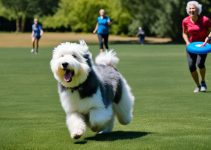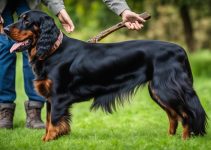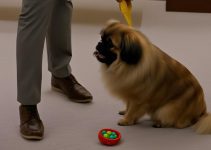Training a Bloodhound requires patience, consistency, and the right techniques to harness their exceptional scent tracking abilities. Whether you’re teaching obedience commands, honing their tracking skills, or addressing unwanted behaviors, effective training is key to ensuring their safety and overall well-being. In this article, I will provide you with essential tips and techniques to help you train your Bloodhound effectively and establish a strong bond with your furry friend.
Bloodhound Training Unlocked
- Start training your Bloodhound early to establish clear boundaries and expectations.
- Use positive reinforcement, such as praise and treats, to encourage desired behaviors.
- Keep training sessions short and engaging, using clear and simple commands.
- Socialize your Bloodhound to help them develop appropriate behavior around strangers and other dogs.
- Avoid punishment-based training techniques and focus on redirection and positive alternatives.
Starting Bloodhound Training Early
Training a Bloodhound puppy from an early age is pivotal in laying the foundation for good behavior and obedience. By starting early, you can establish boundaries and instill basic obedience commands that will shape their behavior as they grow.
One of the first steps in bloodhound puppy training is teaching them basic obedience commands. Commands such as “sit,” “stay,” and “come” are essential for creating structure and fostering a strong relationship with your furry friend. These commands provide a framework for communication and establish boundaries that can guide their behavior in various situations.
Consistency is key when training a bloodhound. Every member of your family should use the same commands and rewards to ensure that the puppy understands the desired behavior. A unified approach facilitates faster learning and prevents confusion.
Positive reinforcement is a highly effective technique in bloodhound training. This involves rewarding desired behaviors with treats, praise, or playtime. By praising your puppy and offering rewards when they successfully follow commands, you reinforce their understanding of what is expected from them.
When training bloodhound puppies, it’s important to keep training sessions short and engaging. Due to their limited attention span, long training sessions can be overwhelming and counterproductive. Aim for sessions that last between 5 and 10 minutes, multiple times a day, to keep your bloodhound engaged and focused.
Using clear and simple commands during training is essential for better comprehension. Bloodhounds respond well to consistent and straightforward commands, making it easier for them to understand and execute. Stick to one or two-word commands to avoid overwhelming your puppy.
Patience is key when training a bloodhound, as each puppy learns at their own pace. Be patient with your furry friend and avoid rushing their progress. Celebrate even the smallest achievements and provide encouragement along the way.
Alongside obedience training, socialization is crucial in helping bloodhound puppies become well-adjusted and confident dogs. Introduce them to a variety of people, animals, and environments to help them develop positive associations and reduce the likelihood of fear or aggression.
Positive Reinforcement and Short Training Sessions
When it comes to training your Bloodhound, positive reinforcement is a highly effective technique. By rewarding desired behavior with treats, praise, or playtime, you can help your dog associate good behavior with positive outcomes. This creates an incentive for them to repeat the behaviors you want to encourage. Positive reinforcement not only helps in training, but it also strengthens the bond between you and your furry companion.
To ensure your Bloodhound stays focused during training sessions, it’s important to keep them short and engaging. Aim for about 10-15 minutes per session, as dogs have limited attention spans. Quality over quantity is key here. By providing clear and simple commands, paired with positive reinforcement, you can effectively communicate your expectations to your dog and make the training process more enjoyable for both of you.
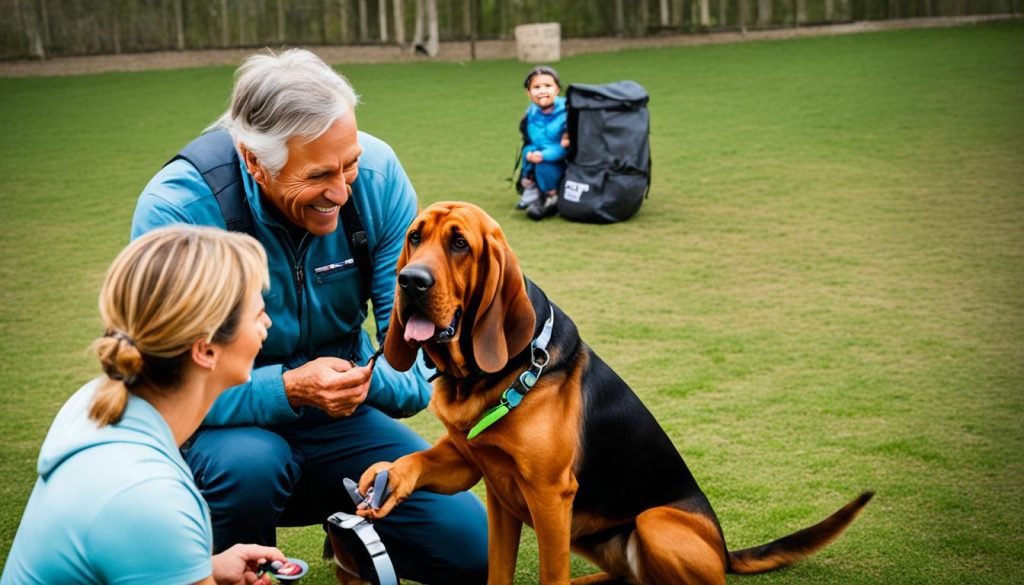
Remember, consistency and patience are crucial throughout the training journey. It may take some time for your Bloodhound to grasp and master certain commands or behaviors. Be patient and celebrate small victories along the way.
By incorporating positive reinforcement, treats, praise, and short training sessions into your Bloodhound’s training routine, you can establish a strong foundation for their obedience and overall well-being. Your furry friend will not only learn important skills but also enjoy the process of bonding and learning with you.
Socialization and Redirecting Unwanted Behaviors
Proper socialization is essential for Bloodhounds to develop appropriate behavior around strangers and other dogs. By exposing them to different environments and situations from a young age, we can prevent aggression and fearfulness. This can be achieved by gradually introducing them to new people, animals, and environments, ensuring positive experiences and interactions.
When it comes to dealing with unwanted behaviors, it’s important to avoid punishment, as it can create fear and distrust. Instead, we can redirect their attention towards positive alternatives. For example, if your Bloodhound starts chewing on furniture or shoes, offer them a chew toy as a substitute. This helps them understand appropriate outlets for their energy and instincts, while also preventing destructive behaviors.
Redirecting unwanted behaviors not only helps to prevent damage to your belongings but also allows the dog to engage in natural behaviors such as chewing. Providing them with appropriate chew toys helps satisfy their chewing instinct and keeps them mentally stimulated.
The Importance of Chew Toys
Chew toys play a vital role in redirecting and preventing unwanted behaviors in Bloodhounds. These toys provide a safe and appropriate outlet for their inherent need to chew. When selecting chew toys, ensure they are durable, size-appropriate, and made from dog-safe materials. Avoid toys that could easily be swallowed or have small parts that could present a choking hazard.
Chew toys come in various shapes, sizes, and textures to cater to different preferences. Some Bloodhounds may prefer softer toys, while others may enjoy the challenge of puzzle toys or the durability of rubber toys. Experimentation will help you determine which types of chew toys your Bloodhound finds most engaging.
Remember to supervise your dog when they are playing with chew toys to prevent any accidents or injuries. Regularly inspect the toys for signs of wear and tear, and replace them as needed to maintain their safety and effectiveness.
By focusing on socialization, redirecting unwanted behaviors, and providing appropriate chew toys, we can help our Bloodhounds become well-behaved and content companions.
Setting Realistic Expectations and Avoiding Punishment-Based Training
When it comes to training your Bloodhound, setting realistic expectations is essential. Remember that each dog learns at their own pace, so be patient and understanding throughout the process. It’s crucial to avoid punishment-based training techniques, such as yelling or physical punishment, as these can harm the bond between you and your dog.
Instead, focus on positive reinforcement, which involves rewarding desired behavior with praise, treats, or playtime. This approach helps your Bloodhound associate good behavior with positive outcomes, making training more effective and enjoyable for both of you. Keep in mind that consistency is key, and all family members should use the same commands and rewards during training.
When dealing with unwanted behaviors, redirection is a powerful tool. Rather than punishing your Bloodhound for chewing on inappropriate items, redirect their attention to a safe and appropriate chew toy. This way, they’ll learn which behaviors are acceptable while still having an outlet for their natural instincts.
Teaching your Bloodhound essential commands like “leave it” and “drop it” can also be life-saving. These commands prevent your dog from picking up dangerous objects or ingesting something harmful. Use positive reinforcement and repetition to help your Bloodhound understand and respond to these commands reliably.
If you’re unsure about how to train your Bloodhound or are facing specific challenges, seeking professional help is always encouraged. A professional dog trainer can provide expert guidance tailored to your dog’s individual needs, helping you achieve the best results.
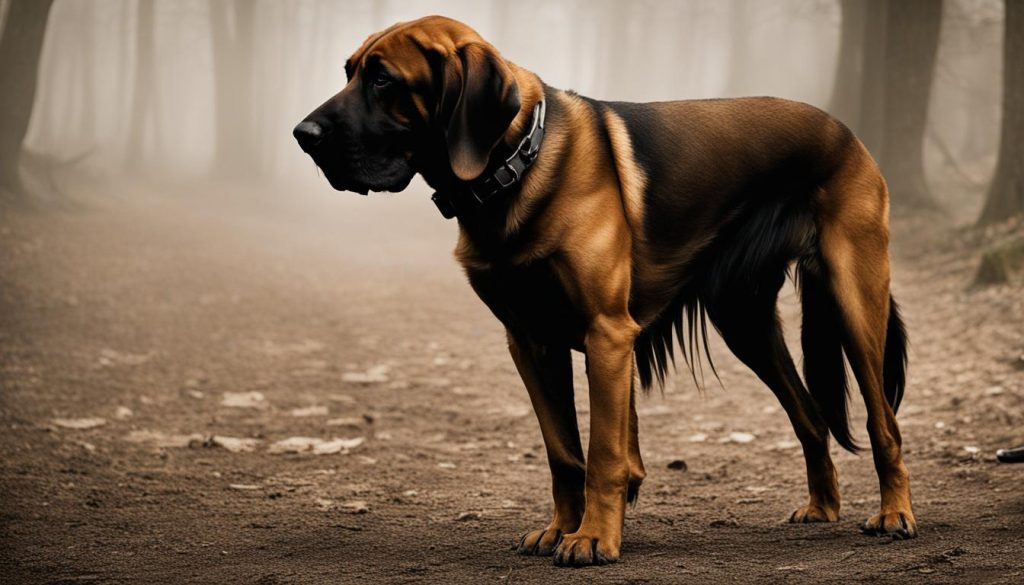
Useful Training Equipment and Online Training Courses
When it comes to training your Bloodhound, having the right training equipment can make a world of difference. Here are some options to consider:
- Training Collar: A well-fitted training collar can help you control your dog during training sessions. Look for options like martingale collars or head halters that provide gentle control without causing harm. Remember to always use collars responsibly and never leave them on your dog unsupervised.
- Training Leash: A sturdy leash is essential for teaching your Bloodhound to walk on a leash without pulling. Choose a leash that is comfortable to hold and the right length for your training needs.
- Treat Pouch: Keeping treats handy during training sessions is crucial for positive reinforcement. A convenient treat pouch allows you to easily access rewards and keeps your hands free to handle the leash and other training tools.
- Clicker: Clicker training is a popular method that uses a clicker to mark desired behaviors. This helps your dog understand the exact moment they did something right and allows for precise timing in training. Practice with your Bloodhound to associate the clicker sound with rewards.
- Training Toys: Interactive toys, such as puzzle feeders and treat-dispensing toys, can be excellent tools for mental stimulation and training. They can help redirect unwanted behaviors and keep your dog engaged.
While the right equipment is essential, sometimes you may need guidance from experts to tackle specific training challenges. Online dog training courses can be a great resource for comprehensive training programs. SpiritDog’s Perfect Obedience course and K9 Institute’s Masterclass, for example, offer online courses tailored to your dog’s needs and cover a wide range of topics, from obedience training to addressing behavior issues.
By investing in the right training equipment and exploring online dog training courses like SpiritDog’s Perfect Obedience and K9 Institute’s Masterclass, you can set your Bloodhound up for success and develop a strong bond through effective training techniques.
Conclusion
Training a Bloodhound can be a challenging yet immensely rewarding experience. By utilizing the effective training tips and techniques discussed in this article, owners can establish a strong bond with their beloved dogs. The key to successful Bloodhound training lies in consistency, positive reinforcement, and patience.
Consistently applying the same commands and rewards among all family members is crucial for a well-behaved Bloodhound. Positive reinforcement, through praise and treats, serves as a powerful tool to motivate and encourage desired behavior. Remember, short and engaging training sessions, using clear and simple commands, are more effective in capturing their attention and facilitating learning.
Setting realistic expectations and avoiding punishment-based techniques are essential for a positive training experience. Bloodhounds thrive in a positive and supportive environment. Socialization plays a vital role in shaping their behavior, allowing them to develop appropriate responses to strangers and other dogs. Additionally, redirecting unwanted behaviors and providing them with appropriate outlets for their energy, such as chew toys, aids in fostering a well-balanced companion.
To further enhance your training journey, consider exploring online training courses that can provide valuable guidance and customized techniques. Courses like SpiritDog’s Perfect Obedience and K9 Institute’s Masterclass offer comprehensive programs to address various training needs, including obedience and behavior issues.
With the right tools, mindset, and consistent training, you can enjoy the companionship of a well-behaved and happy Bloodhound. Embrace the power of positive reinforcement, patience, and proper socialization techniques, and watch your Bloodhound thrive as they become a beloved member of your family.
FAQ
What are some effective training tips for Bloodhounds?
Effective training tips for Bloodhounds include positive reinforcement, consistency, and patience. Using clear and simple commands, along with rewards such as treats and praise, can help in training. Short training sessions and setting realistic expectations are also important aspects of Bloodhound training.
When should I start training my Bloodhound?
It is crucial to start training your Bloodhound early, especially when they are puppies. Basic obedience commands such as “sit,” “stay,” and “come” should be taught from a young age to establish boundaries. Consistency among all family members and positive reinforcement are essential for effective training.
How can I use positive reinforcement in Bloodhound training?
Positive reinforcement involves rewarding desired behavior with treats, praise, or playtime. This technique helps the Bloodhound associate good behavior with positive outcomes. Short training sessions, around 10-15 minutes, using clear and simple commands, can ensure better understanding. Patience is crucial, as each Bloodhound learns at their own pace.
How important is socialization in Bloodhound training?
Socialization is crucial in Bloodhound training as it helps them develop appropriate behavior around strangers and other dogs. Exposing them to different environments and situations from a young age can help prevent aggression and fearfulness. Redirecting unwanted behaviors towards positive alternatives, such as offering a chew toy, can also help in training.
What are some important factors to consider in Bloodhound training?
It is important to set realistic expectations in Bloodhound training, as each dog learns at their own pace. Punishment-based training techniques such as yelling or physical punishment should be avoided, as they can damage the bond between the owner and the dog. Positive reinforcement, teaching commands like “leave it” and “drop it,” and seeking professional help if needed are important factors in effective training.
Are there any useful training equipment and resources available for Bloodhound training?
Yes, there are various training equipment options available for Bloodhounds. It is important to research and select the right equipment based on the dog’s needs. Additionally, online dog training courses can provide valuable guidance and customized techniques. SpiritDog’s Perfect Obedience and K9 Institute’s Masterclass are comprehensive courses covering obedience and behavior issues.


